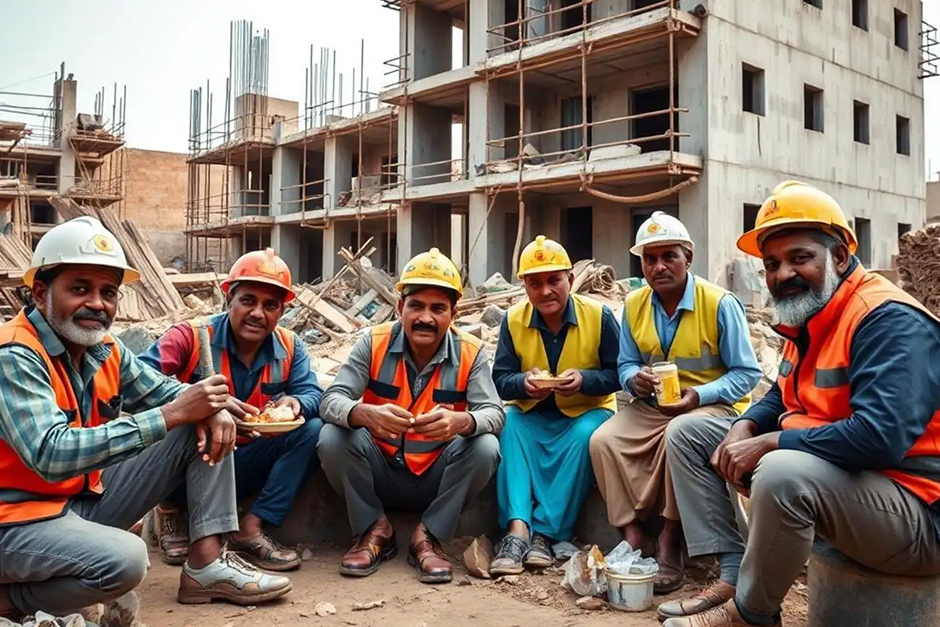India’s sprawling labour market, a cornerstone of its economic narrative, is currently navigating its most significant overhaul in decades. With the implementation of four new labour codes, the nation is poised to redefine the relationship between employers and its vast workforce. These codes promise a paradigm shift, aiming to simplify archaic laws, foster industrial harmony, and extend critical protections like minimum wage, gratuity, and social security to an unprecedented 400 million workers, many of whom previously remained outside formal safety nets.
Simplifying Labour Laws: A Unified Framework
For decades, India’s labour landscape was governed by a labyrinthine structure of over 29 central laws, often leading to complexity for businesses and inconsistent protection for workers. The new reforms consolidate these into four comprehensive codes:
- The Code on Wages, 2019
- The Industrial Relations Code, 2020
- The Code on Social Security, 2020
- The Occupational Safety, Health and Working Conditions Code, 2020
This consolidation is not merely an administrative exercise; it seeks to create a uniform, transparent, and more adaptable legal framework. The stated objective is twofold: to enhance the ease of doing business by reducing compliance burdens and, crucially, to universalize fundamental labour rights across all sectors, including the unorganised economy.
Key Provisions: Ensuring Worker Welfare and Rights
The new labour codes introduce several transformative provisions designed to bolster worker welfare. At their core is the commitment to a universal minimum wage and the expansion of social security benefits, directly impacting millions.
Universal Minimum Wage Guarantee
One of the most impactful changes is the provision for a universal minimum wage. The Code on Wages, 2019, mandates that all workers, regardless of their sector or employment type, will be covered by a minimum wage. This move aims to eliminate wage disparities and ensure a dignified standard of living. The Central Government is empowered to set a ‘floor wage,’ below which no state government can fix its minimum wage. This establishes a baseline protection, especially for workers in the unorganised sector who often face exploitative wages.
Expanded Social Security Net
The Code on Social Security, 2020, significantly broadens the scope of social protection. Previously, benefits like provident fund (EPFO), Employees’ State Insurance (ESIC), and gratuity were largely restricted to workers in the organised sector or specific establishment sizes. The new code:
- Extends ESIC coverage to all establishments with 10 or more employees, and optionally to smaller ones.
- Mandates EPFO benefits for all establishments with 20 or more employees.
- Crucially, it includes provisions for gig workers and platform workers for the first time, enabling governments to formulate social security schemes for them. This acknowledges the evolving nature of work in the digital economy.
Gratuity and Fixed-Term Employment
A significant reform under the Code on Wages is the extension of gratuity benefits to fixed-term contract employees. Previously, gratuity was typically available only to permanent employees after five years of continuous service. The new code stipulates that fixed-term employees will be eligible for gratuity on a pro-rata basis, even if their employment tenure is less than five years. This brings much-needed equity and security for a growing segment of India’s workforce, providing them with similar benefits as permanent employees for the duration of their engagement.
Occupational Safety, Health and Working Conditions
The Occupational Safety, Health and Working Conditions Code, 2020, consolidates laws related to safety, health, and working conditions. It mandates that employers provide a safe working environment, free health check-ups, and empowers the government to specify standards for various sectors. The focus is on ensuring a humane and secure workplace, reducing accidents, and promoting employee well-being.
A senior official from the Ministry of Labour & Employment noted, “These codes are a monumental step towards creating a modern, equitable, and efficient labour ecosystem. They reflect our commitment to balancing economic growth with worker welfare, ensuring a safety net for those who power our nation’s progress.”
Charting the Path Ahead
While the new labour codes herald a transformative era, their successful implementation will hinge on robust enforcement mechanisms and continued dialogue among stakeholders. They aim to strike a delicate balance between fostering a conducive environment for businesses and safeguarding the fundamental rights and dignity of India’s vast workforce. By consolidating laws and expanding critical benefits, India is taking a significant stride towards formalizing its economy, empowering its workers, and establishing a more resilient and equitable labour market for the 21st century.
The journey towards fully realizing the potential of these reforms will involve overcoming logistical challenges and ensuring awareness across diverse industries and worker segments. Nevertheless, the intent behind these codes — to provide a comprehensive framework that protects, empowers, and integrates 400 million workers into a unified system of rights and benefits — marks a pivotal moment in India’s socio-economic development.




